Trang, located in southern Thailand on the coast of the Andaman Sea, is a hidden paradise known for its natural beauty. Compared to crowded tourist centers, Trang offers a more peaceful and authentic atmosphere, making it a unique destination for nature lovers with its stunning islands, untouched beaches, rich marine life, caves, and waterfalls. Appealing to both adventure-seeking travelers and those desiring a tranquil holiday, the region also provides an experience immersed in local culture.
Trang offers a wide range of activities, including island-hopping boat tours, snorkeling, cave exploration, and tropical hiking trails. Additionally, visitors can enjoy cultural discoveries through traditional night markets, historic train stations, and Buddhist temples. This lesser-known yet richly diverse region of Thailand promises a peaceful and unforgettable travel experience.
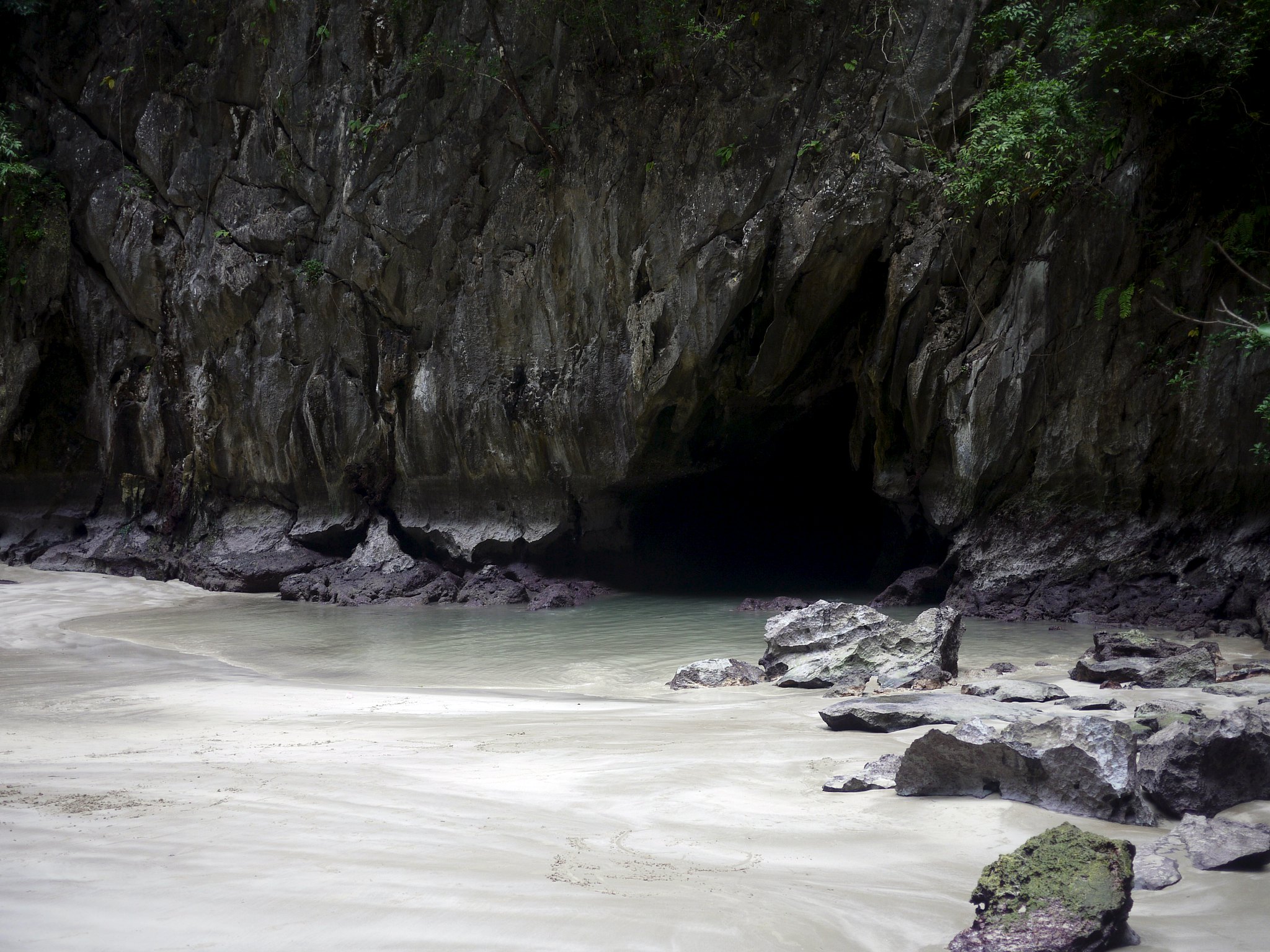
Emerald Cave (Tham Morakot) is a unique natural formation located on Koh Mook Island in Trang, accessible only by swimming or kayaking through the sea. Upon entering the cave, visitors pass through a dark tunnel and are then greeted by a stunning surprise: a hidden beach with white sand surrounded by high cliffs, and a lagoon that glows in shades of turquoise. This secret cove is named “Emerald Cave” due to the emerald color created by sunlight filtering through the cave.
Tham Morakot is best visited during low tide, as access to the cave is only safe at specific times. Guided swimming tours provide both an exciting sense of exploration and a deep connection with nature. The cave and lagoon are considered one of the most iconic natural wonders of the Trang islands, offering unforgettable photo opportunities. This area, which maintains its natural beauty, is also protected under an eco-friendly tourism approach.
2. Koh Kradan – An island famous for its white sandy beaches and clear waters, ideal for snorkeling.
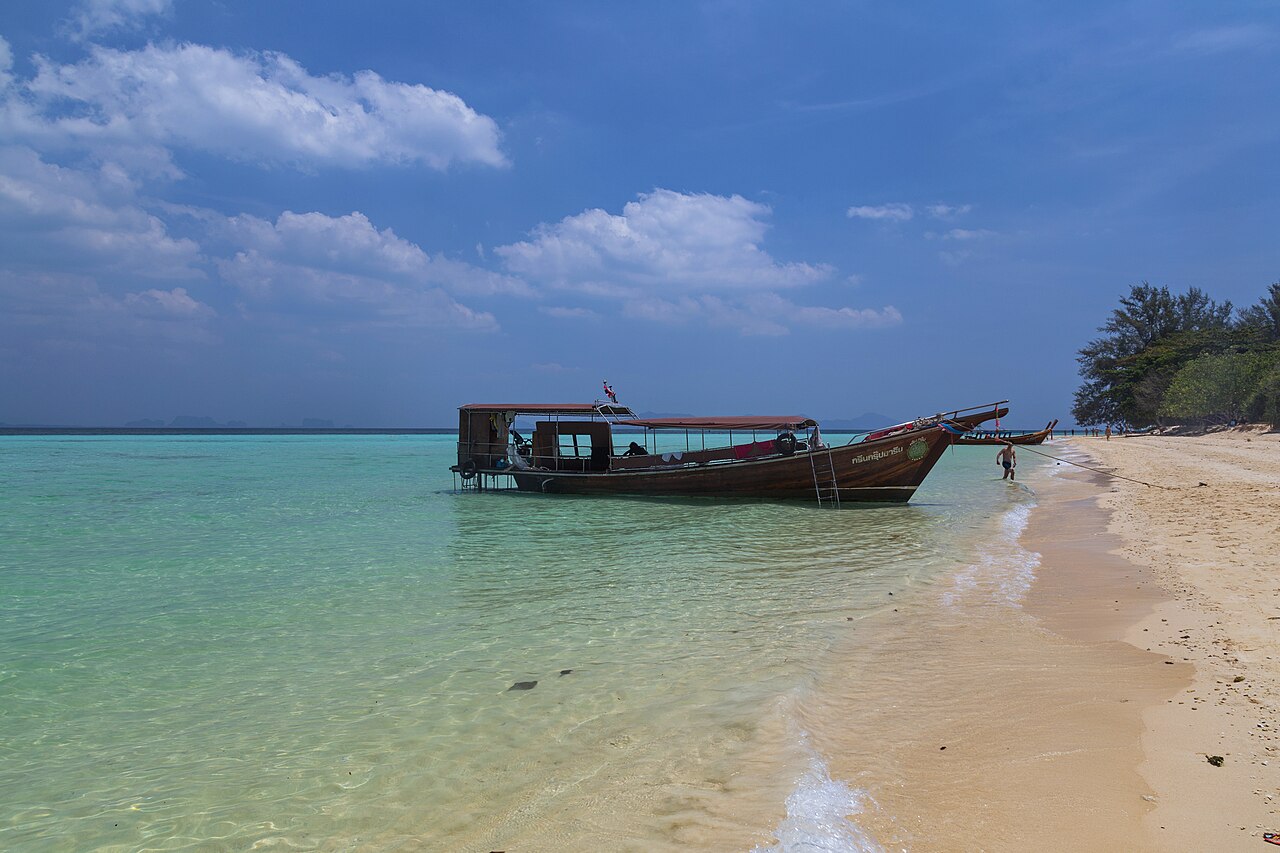
Koh Kradan is one of the most beautiful and most visited islands in the Trang archipelago. Known for its white, powdery sandy beaches and crystal-clear waters, the island is an ideal destination especially for nature lovers and those seeking a romantic escape. The coastline of Koh Kradan merges with the turquoise shades of the Andaman Sea, offering a postcard-like view. With its peaceful atmosphere and untouched nature, it provides a tranquil holiday experience.
The island is also one of the most popular snorkeling spots in the Trang region. Coral reefs located very close to the shore are filled with colorful tropical fish and vibrant marine life. Especially in the East Beach area, stunning underwater scenes can be reached by swimming just a few meters with goggles. Koh Kradan is a special island where visitors can connect with nature, and it should definitely be included in both day trips and multi-day island-hopping tour plans.
3. Koh Mook – An island known for its natural beauty and peaceful atmosphere.
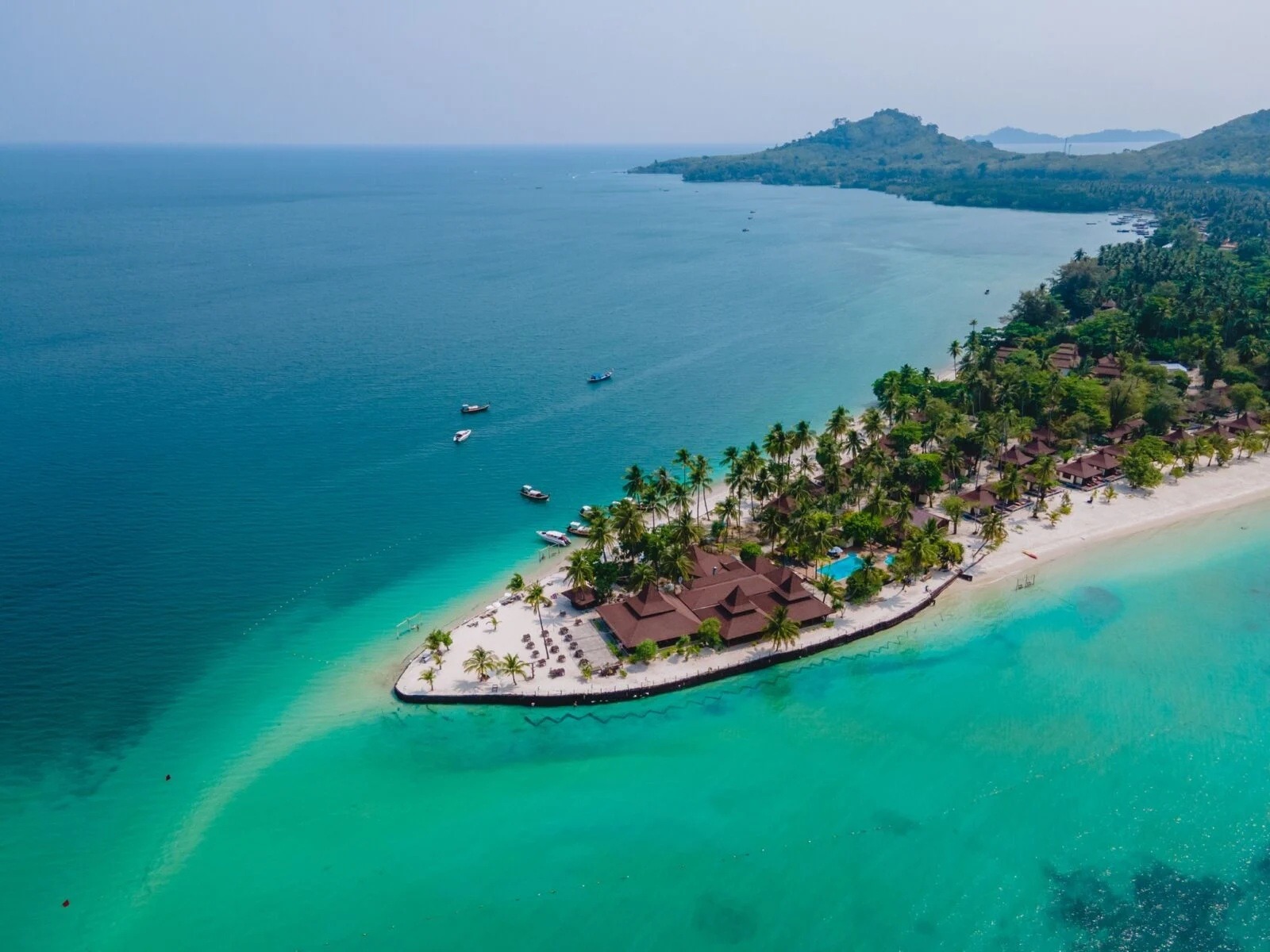
Koh Mook is one of the most striking islands in the Trang archipelago, captivating visitors with its natural beauty and peaceful atmosphere. With beaches lined by tall palm trees, quiet fishing villages, and untouched nature, Koh Mook is a perfect escape for those looking to get away from the crowds and experience the authentic side of Thailand. Access to the island is usually by boat from Trang, and the first impression upon arrival is one of silence and serenity.
Koh Mook stands out not only for its beaches but also for natural wonders like Emerald Cave (Tham Morakot). The island also offers forest trails for hiking, coves to explore by kayak, and traditional villages where visitors can immerse themselves in local life. Although tourism is developing, the island has largely preserved its simple and natural character. This makes Koh Mook a unique destination for travelers seeking both relaxation and the chance to discover Thailand’s natural beauty.
4. Koh Libong – A peaceful island known for its dugongs (sea cows) and preserved natural environment.
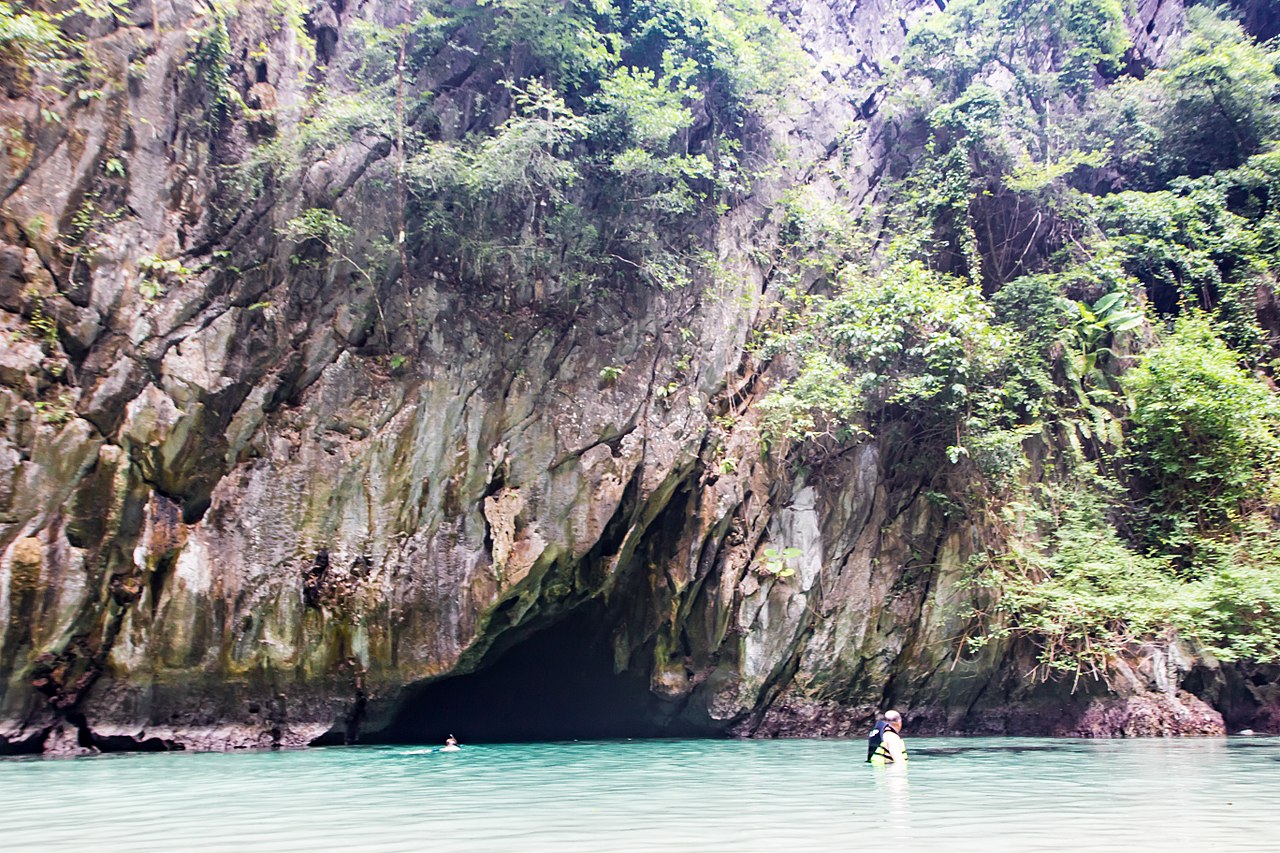
Koh Libong is the largest island in Trang and is known as one of the most important marine life conservation areas in Thailand. The island is particularly notable as a habitat for dugongs, also known as sea cows. These rare and endangered marine mammals feed on the seagrass beds surrounding Koh Libong and can often be observed from specific viewpoints. For nature lovers and ecotourism enthusiasts, the island offers a unique opportunity to observe wildlife in a quiet and unspoiled environment.
Koh Libong also features mangrove forests, birdwatching areas, and traditional Muslim fishing villages, offering rich ecological and cultural diversity. Visitors to the island can enjoy nature walks, relax on tranquil beaches, or explore the surrounding natural beauty by kayak. Although tourism infrastructure is limited, this helps preserve the island’s simplicity and authentic character. Koh Libong is an ideal island for those seeking a peaceful experience in harmony with nature.
5. Hat Chao Mai National Park – A marine park area offering mangrove forests, beaches, and caves.
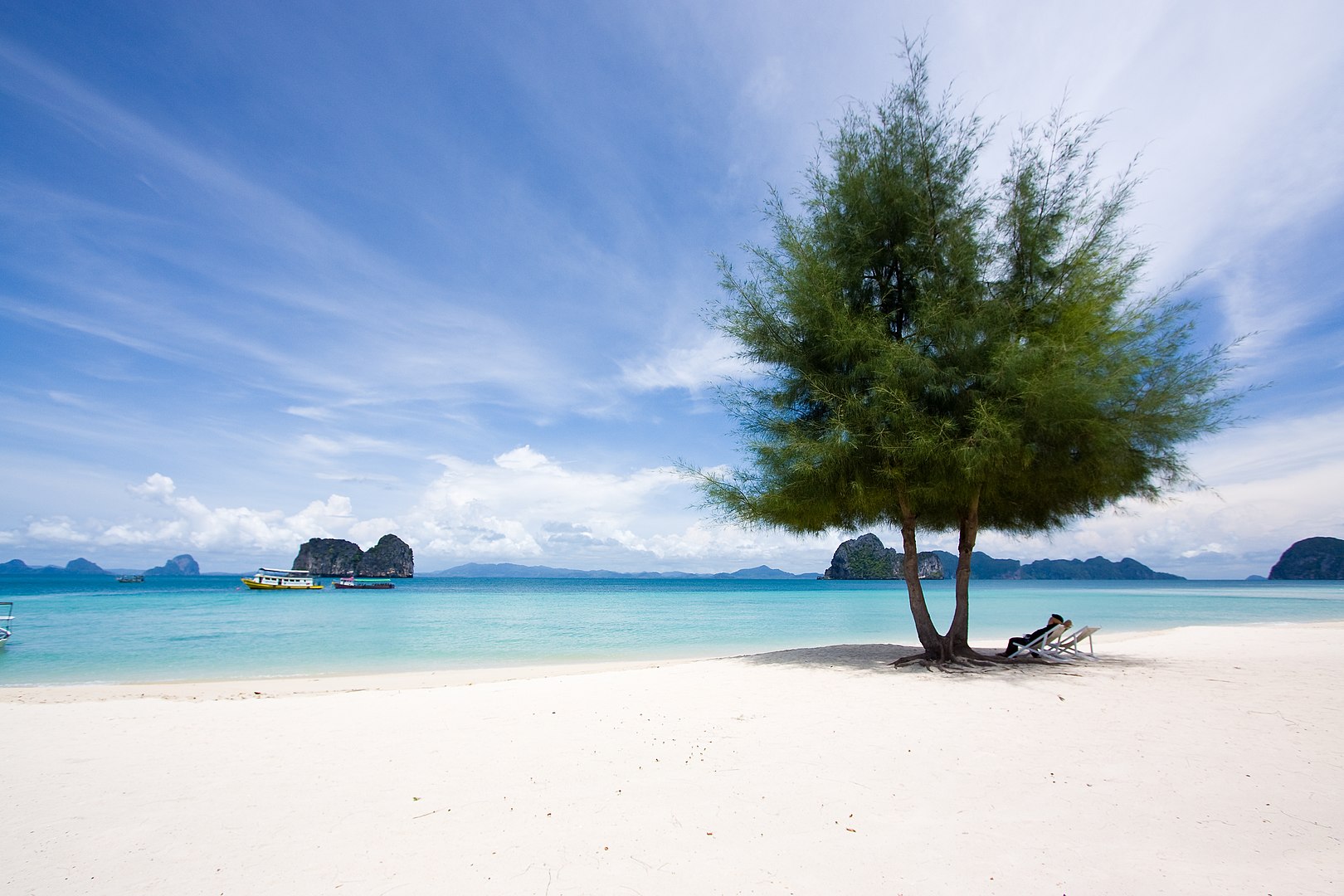
Hat Chao Mai National Park is a protected area located in the southwest of Trang Province, established in 1981. Stretching along the coast of the Andaman Sea, this national park covers both terrestrial and marine ecosystems across a vast area. Within the park’s boundaries, visitors can find a unique combination of natural features such as white sandy beaches, rocky shores, mangrove forests, and sea caves. The region is also home to a variety of bird species, marine life, and diverse vegetation.
One of the park’s most well-known spots is Yao Beach, which stands out with its long shoreline and peaceful atmosphere. Rock formations and caves like Chao Mai Cave are ideal for nature walks and photography. Visitors can take part in kayaking tours, join guided nature walks, or simply relax while listening to the sounds of nature. Hat Chao Mai National Park is an essential destination for those who want to explore Trang’s natural wealth and spend time in protected areas.
6. Pak Meng Beach – One of Trang’s most popular beaches, famous for its sunset views.
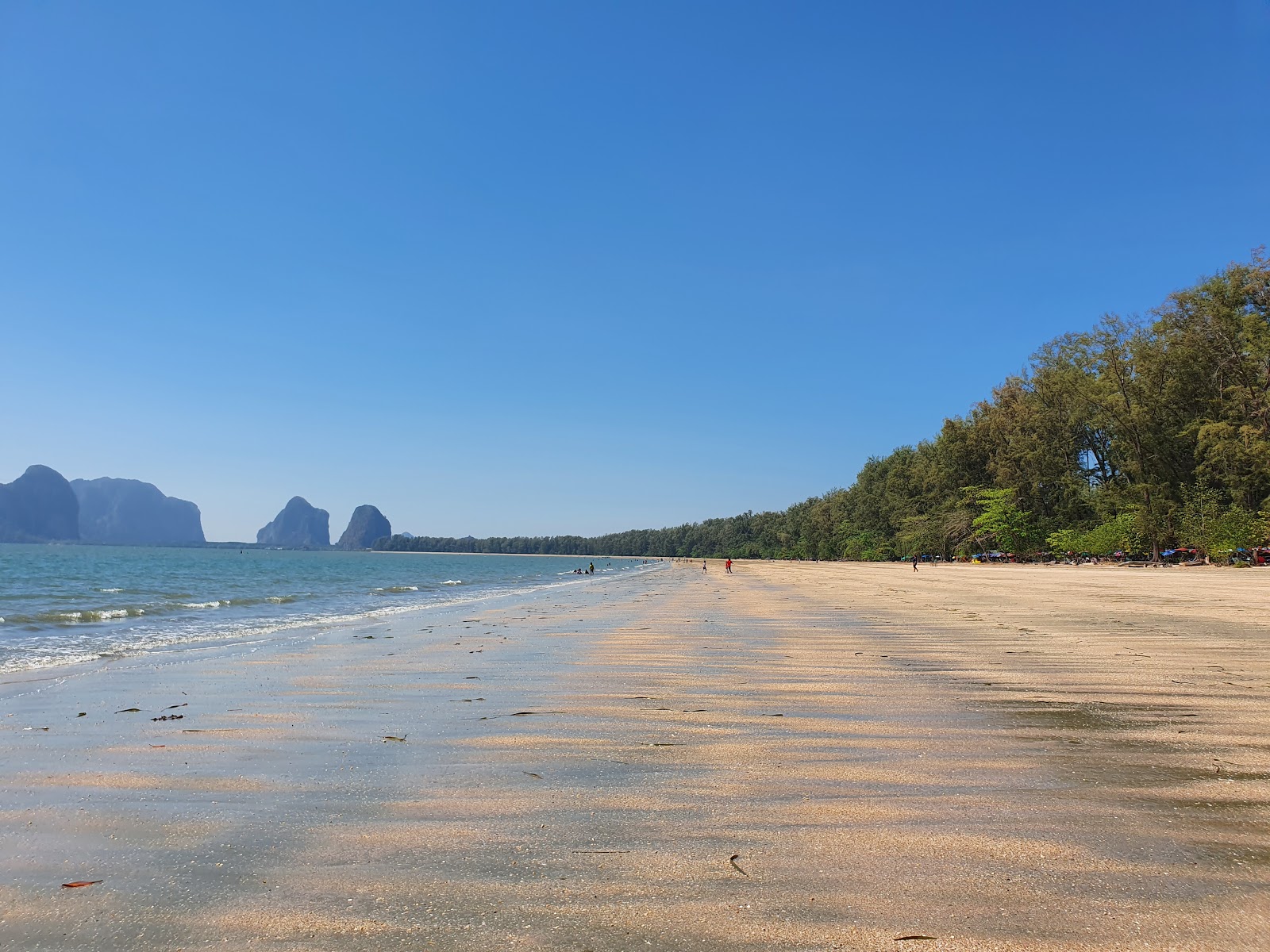
Pak Meng Beach is one of the most visited beaches on the mainland coast of Trang. Its crescent-shaped shoreline, fine sand, and shallow waters make it ideal for both walking and swimming. The beach’s peaceful atmosphere and natural scenery also make it a popular weekend retreat for locals. Palm trees and casuarina trees lining the beach provide shaded areas, offering comfort for day-trippers.
The most captivating feature of Pak Meng Beach is its sunset views. In the evening, the sky transforms into shades of red, orange, and purple, creating a picturesque scene alongside the small islands visible on the horizon. The seafood restaurants near the beach are perfect stops for enjoying the scenery while tasting fresh Thai cuisine. Easily accessible in terms of transportation, Pak Meng Beach is one of the most relaxing and visually rewarding stops on a trip to Trang.
7. Yao Beach (Hat Yao) – A quiet escape known for its remote and untouched natural surroundings.
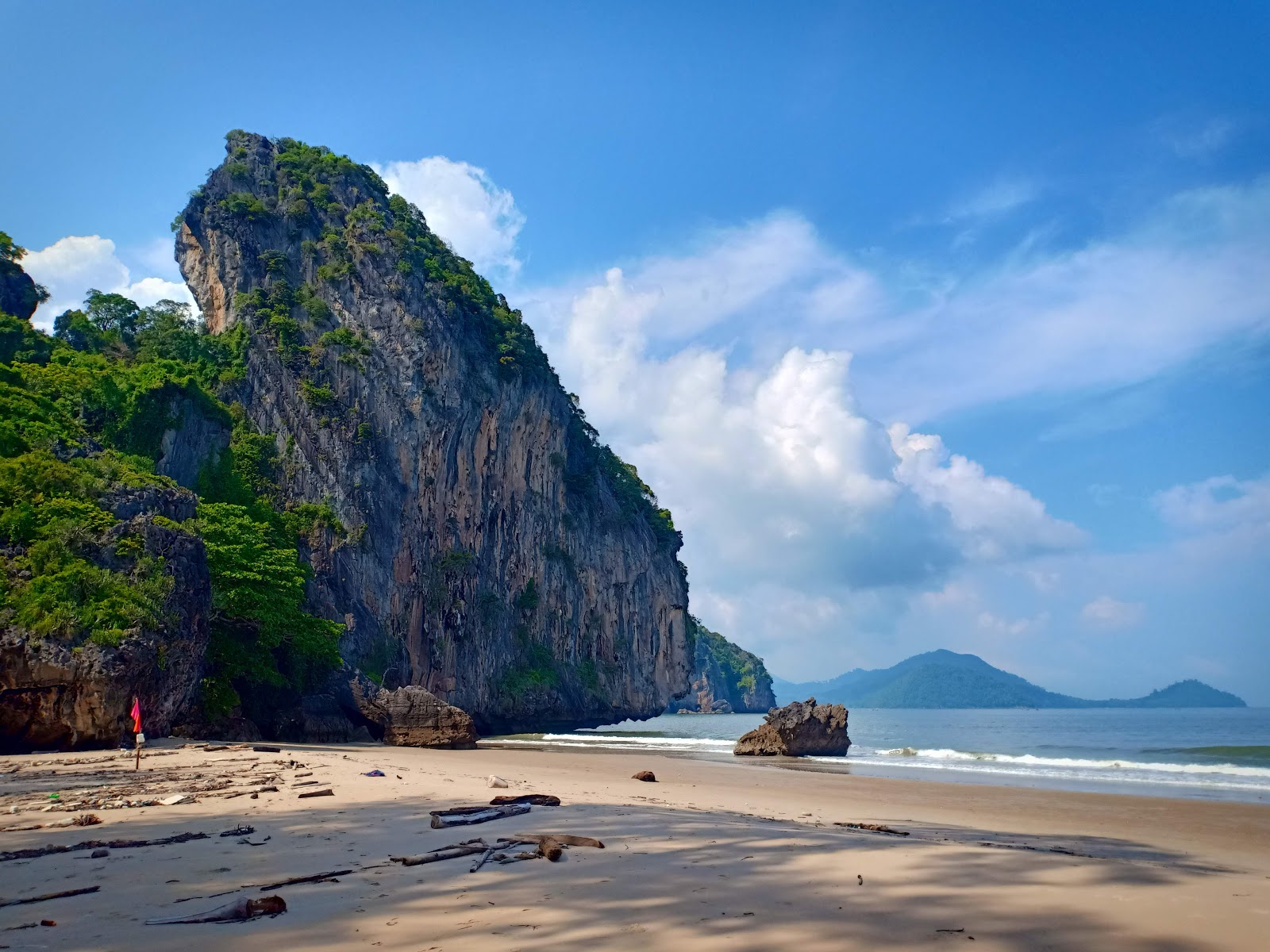
Yao Beach (Hat Yao) is known as one of Trang’s longest and most pristine beaches. Located about 30 kilometers from the city center, this shoreline is an ideal escape for travelers seeking a peaceful atmosphere away from the crowds. The fine sand stretching along the coast, calm sea, and lush green forests rising in the background create a natural postcard-like scene. It offers an experience in harmony with nature, free from noise, development, or crowds.
One of the most striking features of Hat Yao is that it has not yet been fully discovered by tourism. This allows the beach to maintain its untouched and simple character. Dominated by silence, the beach is perfect for long walks, meditation, or simply relaxing by the sea. In addition, boat tours with small fishing vessels make it possible to reach nearby islands. Yao Beach is a hidden paradise for those who wish to explore Thailand’s natural beauty in tranquility.
8. Trang Underwater Wedding Festival – A unique underwater wedding event held annually on Valentine’s Day.
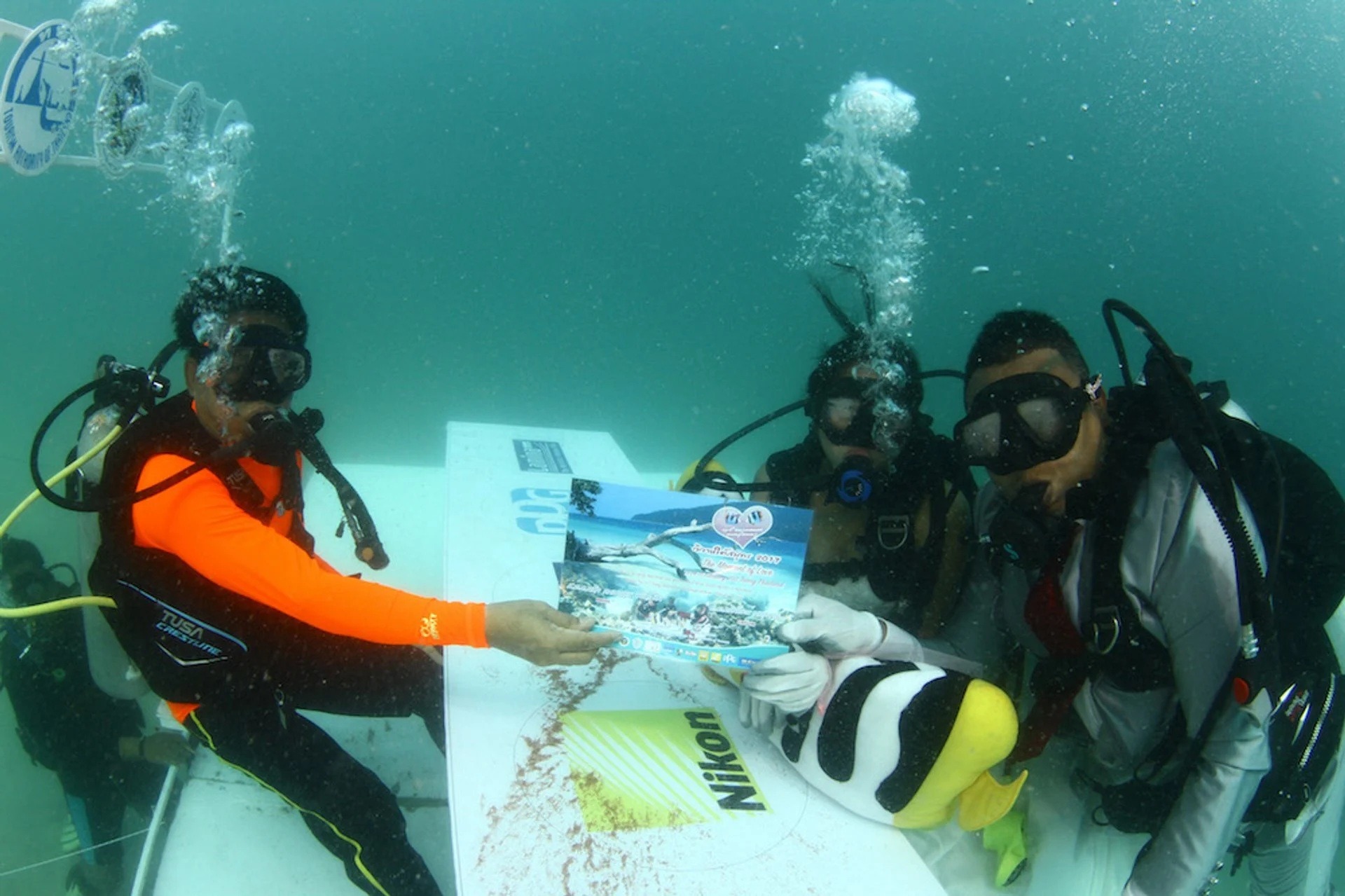
Trang Underwater Wedding Festival is an extraordinary and romantic event held annually in Thailand’s Trang Province, usually around mid-February between the 13th and 15th, near Valentine’s Day. First launched in 1996, the event gained international attention when it entered the Guinness Book of World Records in 2000 as the “world’s largest underwater wedding ceremony.” Couples who wish to participate join the traditional “Khan Maak” procession in the city center wearing masks, regulators, fins, and waterproof wedding attire. They are then taken by speedboats to the coast for ceremonial underwater weddings.
In addition to the underwater segment, the festival includes a rich cultural program. Ceremonies above the water incorporate Buddhist and Thai traditional rituals—couples participate in a water-pouring ceremony, a long procession, and a parade through the city accompanied by drums and horns. The underwater weddings involve legal marriage registration, waterproof certificates, and photographs, with only certified divers allowed to join the underwater portion. This event offers a unique experience for couples seeking a romantic and unforgettable ceremony while also promoting the region’s tourism potential.
9. Trang Night Market – A lively night market where you can try local delicacies and street food.
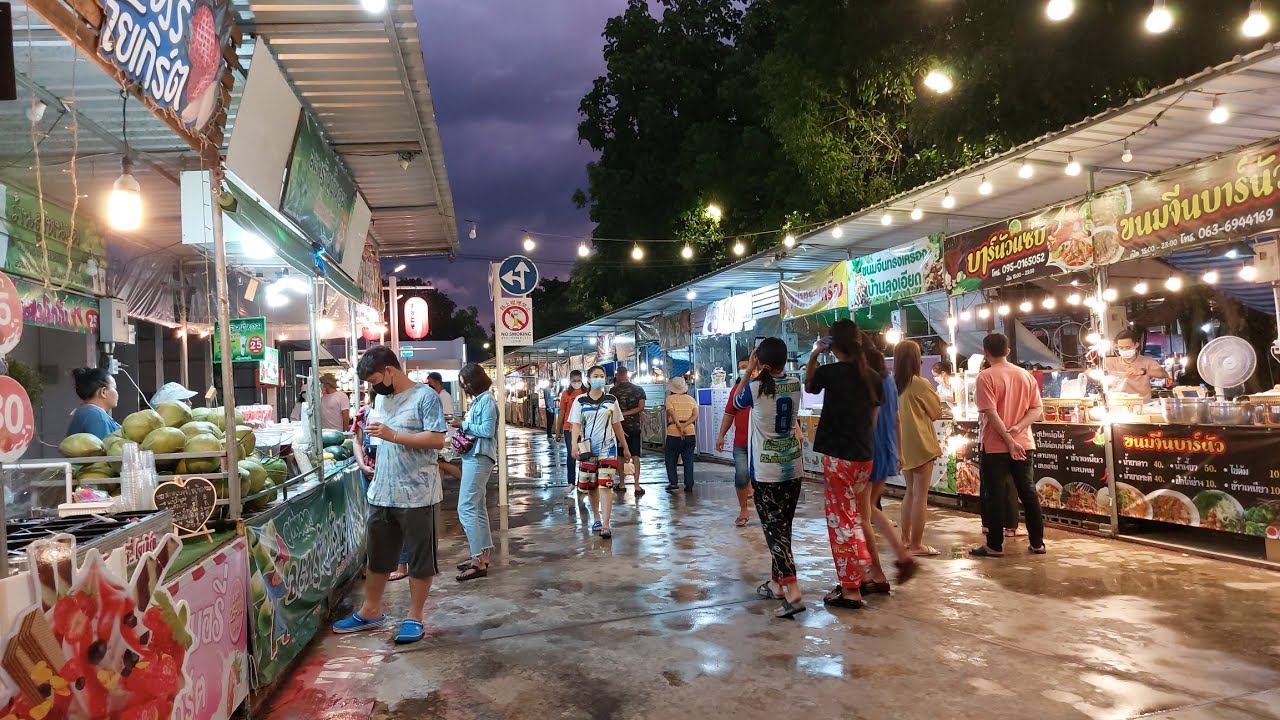
Trang Night Market (also known as Centrepoint Night Market or Cinta Garden) comes alive in the evening and offers a warm, vibrant atmosphere where locals and tourists meet. Conveniently located near the train station, the market is especially active between 5:00 PM and 9:00 PM. It presents a feast of flavors with a variety of Thai street food, fresh fruits, handmade snacks, and hot tea and coffee options. Main dishes for two people typically start around 65 THB (~2 USD); prices are quite affordable, and the flavors may be slightly spicy to match local tastes.
The market features stalls serving freshly prepared food along with small street-style seating areas, giving visitors the chance to try authentic Thai cuisine. Unlike the larger daytime markets, the night market is more limited in size but offers a cozy and local-focused experience. It provides an immersive atmosphere where visitors can mingle with locals and enjoy a lively yet non-touristy street culture. As vendors begin closing their stalls later in the evening, visiting early in the evening is recommended for the best experience.
10. Wat Tantayaphirom – One of the most important Buddhist temples in the city.
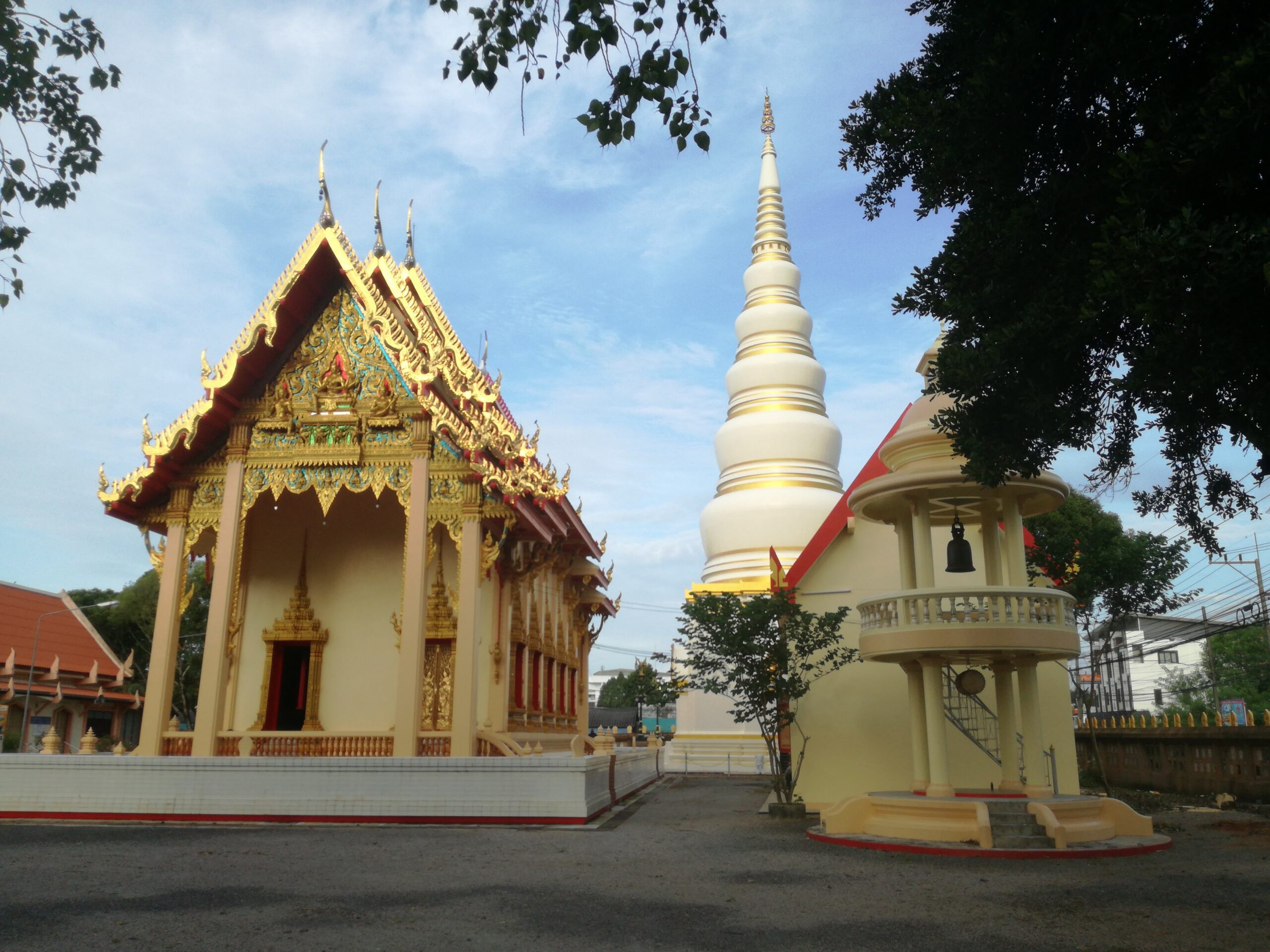
Wat Tantayaphirom is a long-established Buddhist temple located in the heart of Trang city, attracting both locals and visitors. The temple stands out with its elegant Thai architecture, featuring structures in white and gold tones. In front of the main prayer hall, set within a garden, Buddhist monks can often be seen performing rituals. Visitors can pray here, experience the temple’s serene atmosphere, and observe traditional Buddhist ceremonies.
Wat Tantayaphirom also serves as a cultural center. Festivals, charity events, and Buddhist ceremonies held around the temple strengthen community ties and offer deep insights into Thai culture. Visitors to the temple can find peace in the temple garden, buy prayer items and traditional souvenirs from small gift shops, and sometimes take part in prayer ceremonies to become part of the local spiritual atmosphere.
11. Khao Kop Cave – An impressive cave system that can be explored by boat.
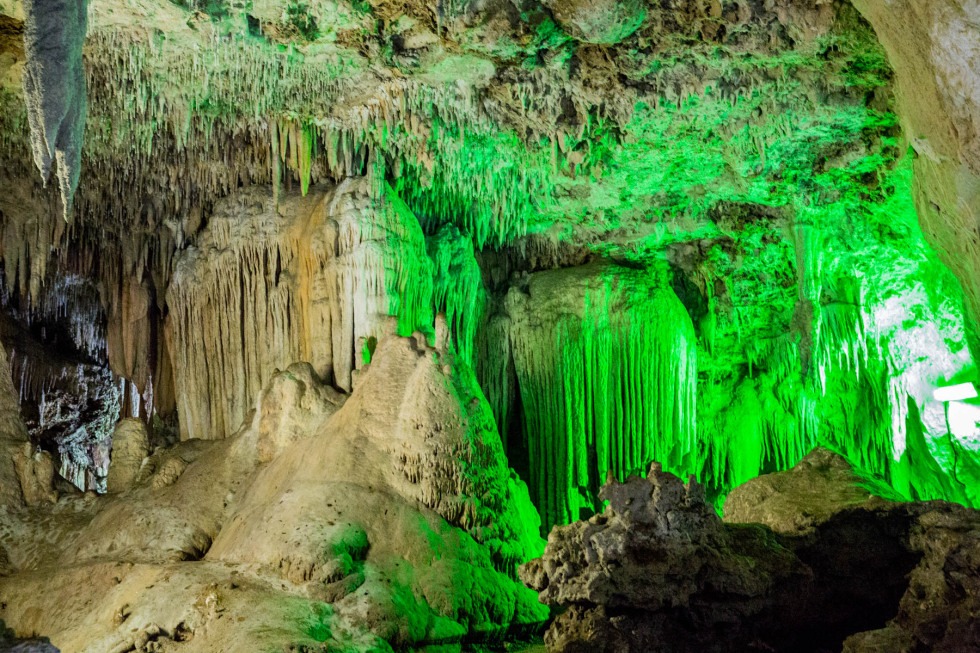
Khao Kop Cave (Tham Le Khao Kop) is an impressive limestone cave system located in the Huay Yod district of Trang. The cave features a natural underground waterway about 4 km long, carved by water flowing from the mountain. Visitors travel through the cave on small paddle boats, encountering very low ceilings near the entrance, where it is often necessary to lie down inside the boat to pass—this section is known as the “belly of the dragon.”
Inside, large cave chambers with elegant stalactite and stalagmite formations, small shrines, and dynamic lighting create a mesmerizing atmosphere. Described by visitors as a “scary but must-experience adventure,” the journey combines the thrill of survival with the awe of discovering natural beauty. Since some parts become inaccessible when water levels are high, the dry season (November to April) is considered the best time to visit.
This destination is one of Trang’s most exciting spots for both nature lovers and adventure seekers.
12. Peninsular Botanic Garden (Thung Khai) – Tropical vegetation observation with walking trails and watchtowers.
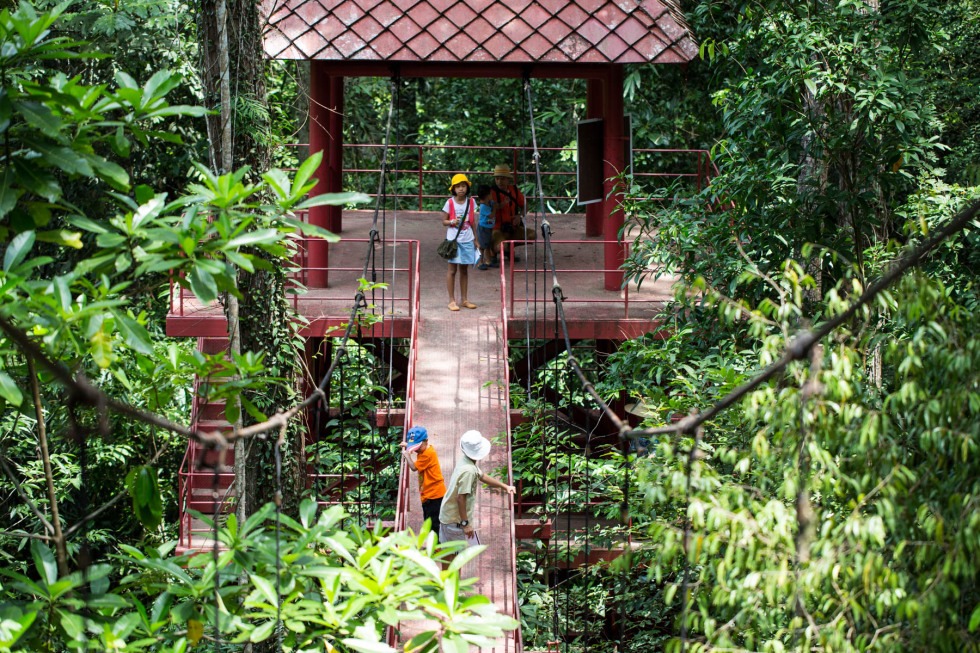
Peninsular Botanic Garden (Thung Khai) is a natural treasure located in the Yan Ta Khao district of Trang. Spanning 2,600 rai (approximately 416 hectares), this botanical garden features tropical rainforests, swamp areas, and low hills. Visitors can explore the canopy level of the tropical vegetation via a 175-meter-long canopy walkway built 10–18 meters above ground. This height offers opportunities to observe birds, squirrels, and other forest creatures up close, providing an unforgettable experience for nature lovers.
The garden offers more than just trails and walkways—it includes an arboretum, medicinal plant sections, a botanical library, and a museum, serving both recreational and educational purposes. Visitors can join guided tours to learn about tropical flora, relax in observation towers, or spend time at the camping areas. Admission is free, and it is open daily from 08:30 AM to 4:30 PM, making it easily accessible. Peninsular Botanic Garden is a must-visit destination in Trang for travelers interested in nature walks, ecotourism, and plant observation.
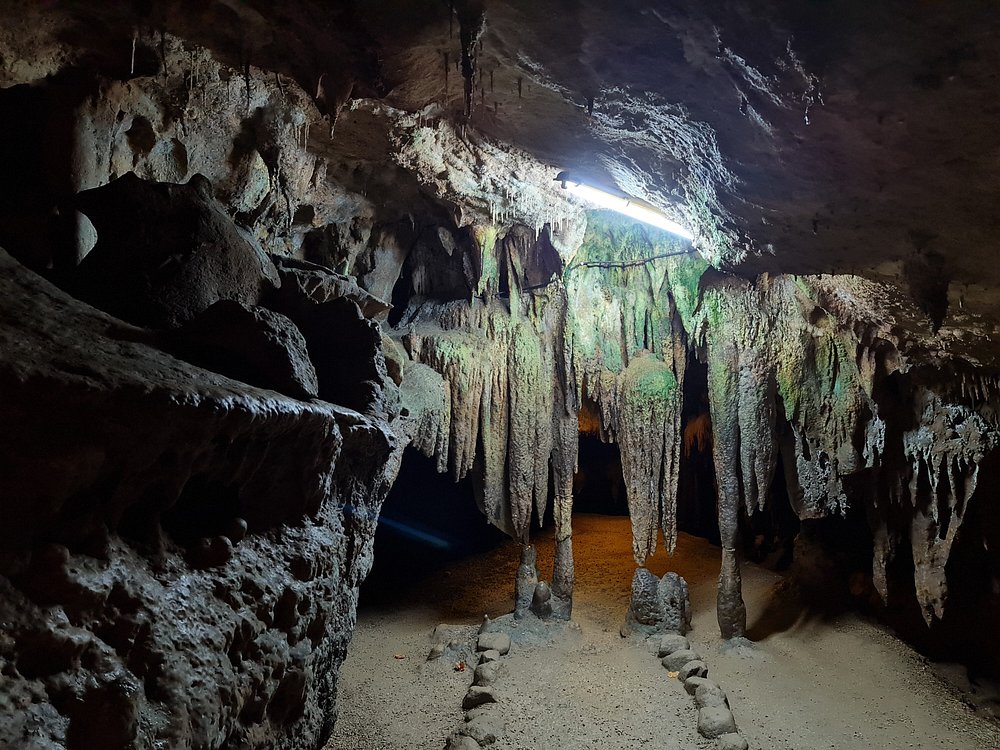
Le Khao Kob Cave Temple (Tham Le Khao Kob), also known as Le Khao Kop, is a mysterious cave temple located in the Huai Yod district of Trang, known for its natural beauty and sacred atmosphere. Part of the cave is above ground, while the other part is submerged, featuring narrow water-filled corridors that must be navigated by boat. As visitors enter the cave by boat, they must lie down to pass through sections where the ceiling descends to nearly touch the surface—this area is known as the “belly of the dragon.”
Inside the temple, small Buddhist statues and prayer spaces are nestled among natural formations adorned with stalactites and stalagmites. Visitors have the opportunity to explore a geological wonder while also engaging in spiritual reflection within a serene, almost pilgrimage-like atmosphere. This hidden sacred site offers an unforgettable experience for both nature lovers and those seeking a spiritual journey; however, due to the low ceilings and confined spaces, it may not be suitable for individuals with claustrophobia.
14. Trang Railway Station – A historic train station featuring colonial architecture.
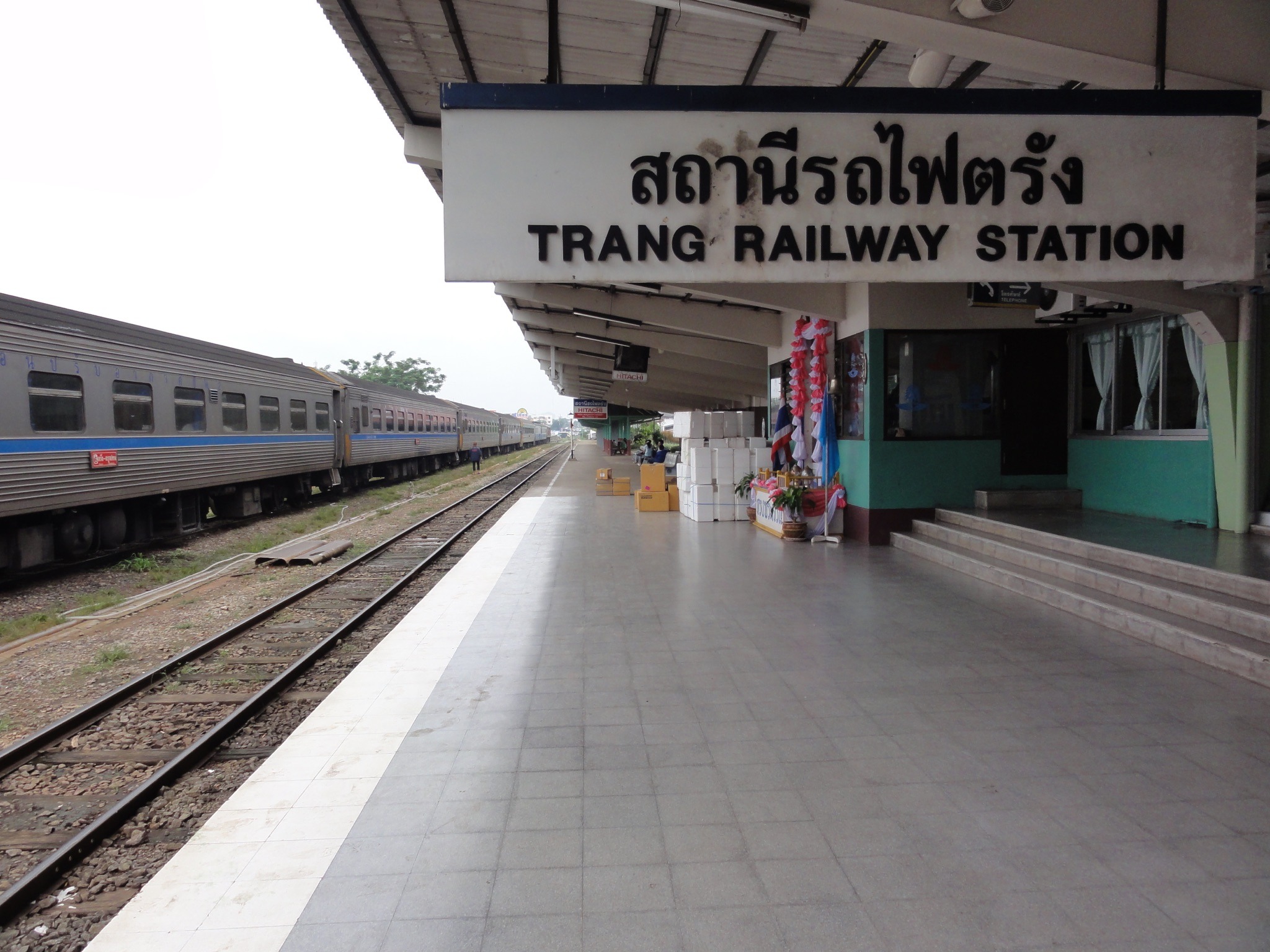
Trang Railway Station (Thap Thiang Station), opened in 1913, is a transportation hub of historical and cultural significance in southern Thailand. Built in French colonial architectural style, the station is notable for its classic arched facades, open-air waiting areas, and nostalgic atmosphere. Although it was rebuilt in 1969, its architecture has largely retained its original aesthetic. The station offers easy access to the city center, and the surrounding area is filled with taxis and tuk-tuks.
This station serves not only as a travel point but also as a symbol of Trang’s cultural identity. The Sino-Portuguese-style building facades and the old hotels and shops lining Rama VI Road reflect the region’s rich historical character. Visitors using the station can travel by train to Bangkok and southern cities while also having the opportunity to photograph this historic structure. Over time, the station has become the backbone of the city and a nostalgic and cultural discovery point for travelers.
15. Kantang Railway Station – One of Thailand’s oldest wooden train stations.
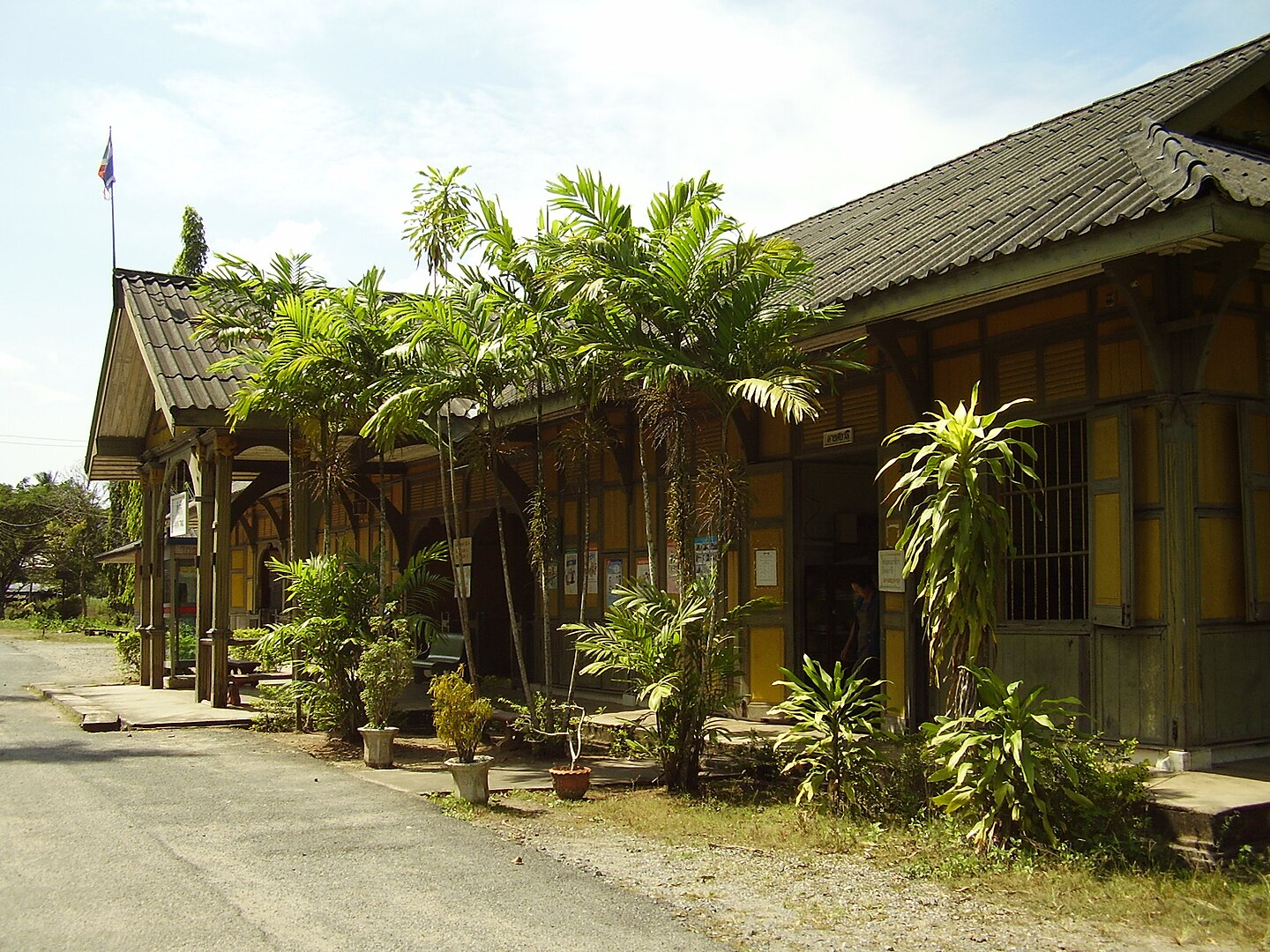
Kantang Railway Station, located in Kantang district of Trang Province, was opened on April 1, 1913, and is one of the oldest wooden train stations still in operation in Thailand. Its original wooden structure, painted in mustard yellow and dark brown, reflects the architectural style of the Rama VI era and was officially registered as a historic monument by the Fine Arts Department of Thailand in 1996. The station consists of two parts: the waiting platform and the main hall—both of which have preserved their original design to this day.
This historic station still operates daily train services and serves the Bangkok–Kantang line. Entrance is free, and the “Love Station” café located on the platform is a popular stop for taking photos and enjoying nostalgic breaks. Visitors experience a functioning transportation hub while strolling through a preserved historical setting full of vintage charm.
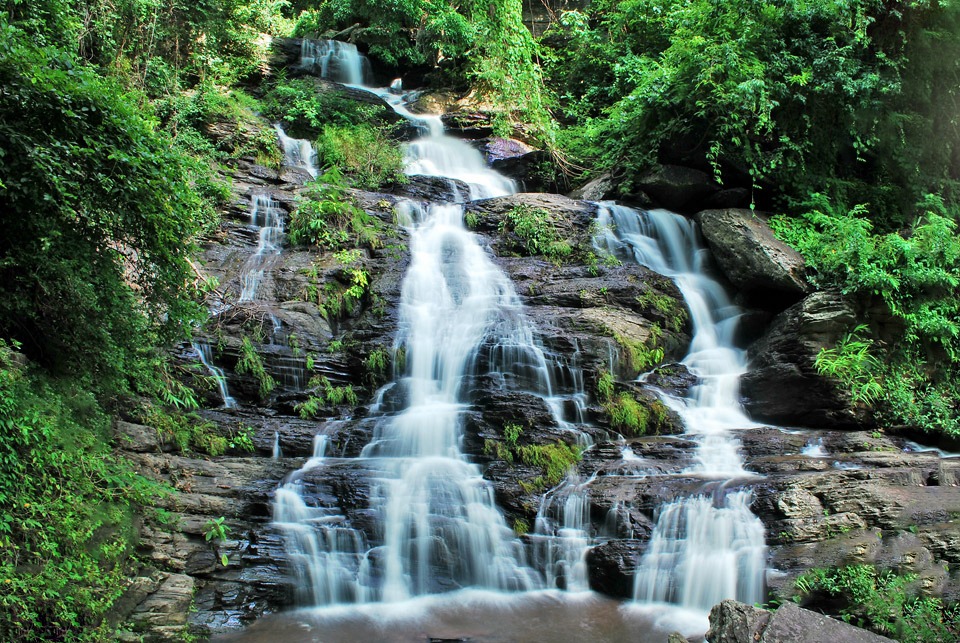
Namtok Sai Rung (Rainbow Waterfall) gets its name from the rainbow colors created when sunlight interacts with the mist rising from the waterfall. Located about 25–30 kilometers from Trang city center, this natural wonder is accessible by road and offers easy walking trails. Relaxing beneath the waterfall and cooling off in nature is a pleasant experience. It can be reached by turning off at the 17th kilometer mark on the Trang–Phatthalung highway, followed by a roughly 4-kilometer dirt road.
This waterfall is known for its powerful stream flowing through tropical forests. During the rainy season (May–October), the water volume increases, and the rainbow effect becomes more visible. Visitors can come in comfortable shorts and swimsuits for trekking, picnicking, or enjoying a refreshing shower—wooden steps and rocky platforms make the visit both safe and an impressive nature experience. For those seeking peaceful natural surroundings away from crowds, Namtok Sai Rung offers a tranquil escape.
17. Laem Tanyong Po – A quiet village with sea views and walking trails.
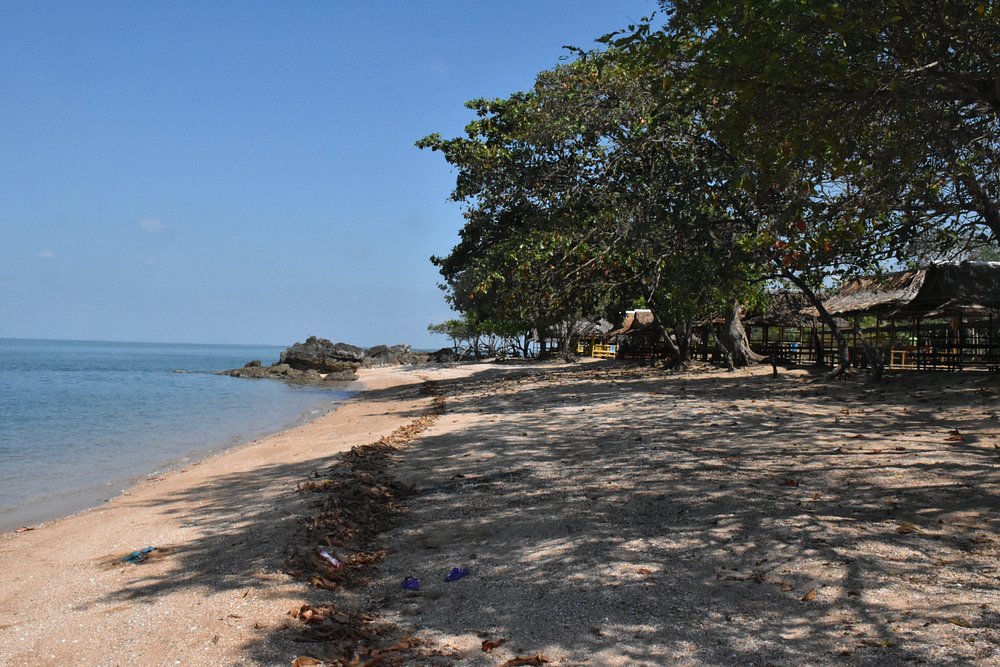
Laem Tanyong Po is a quiet cape settlement stretching into the Andaman Sea, offering a long and narrow sandy beach surrounded by palm trees. Although located in Satun’s Palian district, it can be a preferred stop for walking and seaside relaxation during Trang trips. A path through mangrove forests leads you to the sea; the area is generally peaceful, far from crowds, and provides a serene escape.
This natural gem is ideal for tranquil walks and sunset views. The nearby fishing village allows you to experience local life, and small nearby restaurants offer fresh seafood—visitors often recommend, “when you come here, be sure to try the seafood.” Laem Tanyong Po offers not only natural beauty but also a light cultural and gastronomic discovery.
18. Ko Sukorn – A peaceful island where you can experience authentic Thai culture.
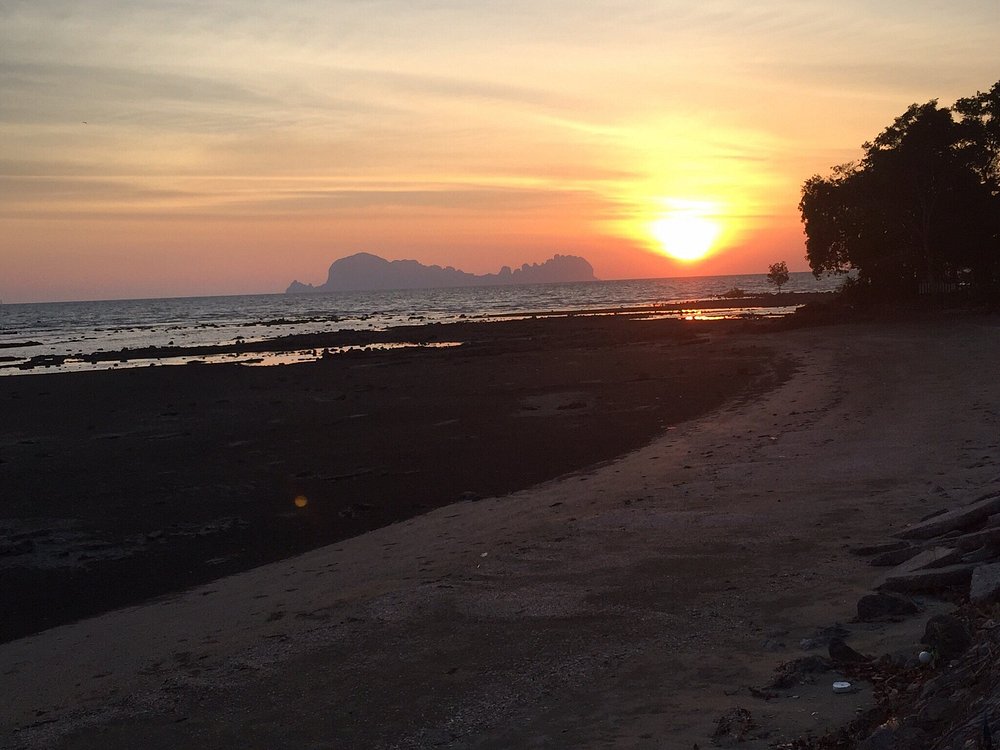
Ko Sukorn, also known locally as “Pig Island,” is located in Trang’s Palian district along the Andaman Sea. Covering an area of approximately 12 km², the island is home to a close-knit community of about 2,500–3,000 Muslim fishermen and farmers, according to 2012 population data. There are few official beaches or tourist facilities, no car traffic, and daily life is carried out mostly by bicycle, motorbike, or long-tail boats. This simplicity makes Ko Sukorn a unique place to experience authentic, untouched Thai culture.
The island offers an agriculture-based lifestyle—with long rice fields, watermelon gardens, water buffalo, and rubber trees setting a peaceful rhythm. Visitors can explore the island by renting a bicycle, wandering through local villages, or taking day trips by fishing boat to nearby islands. Seaside cafés such as the popular “Loh Nam Café” allow guests to enjoy the island’s distinctive local atmosphere.
19. Khao Chong Wildlife Development and Conservation Promotion Station – A protected area for waterfalls and nature hikes.
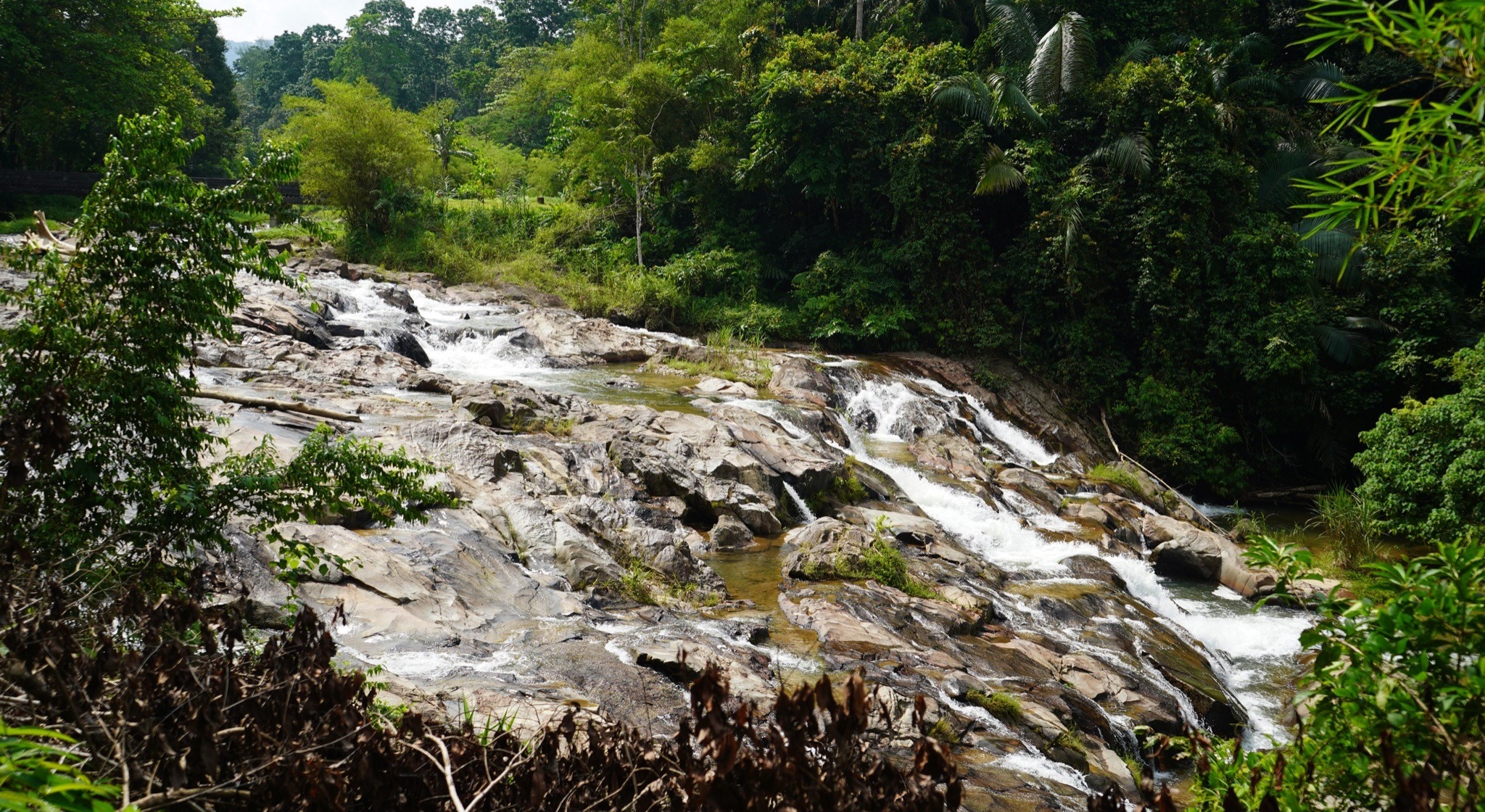
Khao Chong Wildlife Development and Conservation Promotion Station, located about 20 km from Trang city center, is one of Thailand’s first nature and wildlife research centers, established in 1959. Surrounded by tropical rainforests, clear streams, and abundant water sources, the area is home to three main waterfalls: Ton Yai, Ton Noi, and Ka Chong. It is typically accessed via the Trang–Phatthalung road, and informational signs placed along the walking trails provide visitors with educational insights into the local ecosystem.
The center’s nature trails and educational routes are suitable for both families and nature enthusiasts. Medium-sized waterfalls like Ton Yai and Ton Noi offer opportunities for swimming and picnicking, while Ka Chong waterfall stands out for its hidden beauty. The site also includes a museum and exhibition hall featuring presentations on natural resource conservation. Offering rich opportunities for exploration and photography, this center is a significant ecotourism destination for both local and international visitors.
20. Trang Old Town – Ideal for cultural visits with its old Chinese-Thai architecture and nostalgic streets.
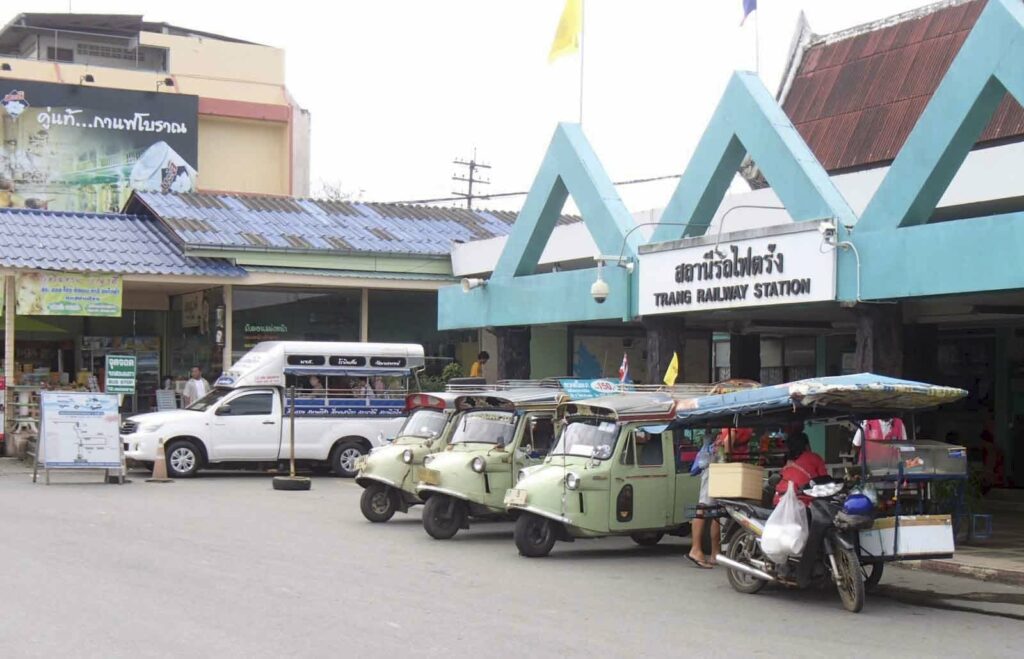
Trang Old Town (Kantang) is a nostalgic center that reflects the cultural richness of southern Thailand. Here, Sino-Portuguese-style shophouses from the 19th century, with their pastel-colored wooden shutters and ornate facades, are carefully preserved. As you walk through this old quarter, you encounter a cosmopolitan atmosphere where Buddhist temples, Hokkien temples, a Protestant church, and Muslim places of worship coexist—often described as “an example of harmonious diversity.”
Trang Old Town offers not only architectural charm but also vibrant cultural experiences. Rituals such as the Vegetarian Festival showcase Chinese traditions, while street art, village culture, and local flavors found in old-style cafés reflect the authentic side of Thailand. In addition, sites like the Kantang Museum and the lighthouse serve as intersections of past and present, with photogenic routes leading to the old train station and the riverside. Trang Old Town is a true paradise for those who enjoy slow-paced strolls, photography, and cultural exploration.
